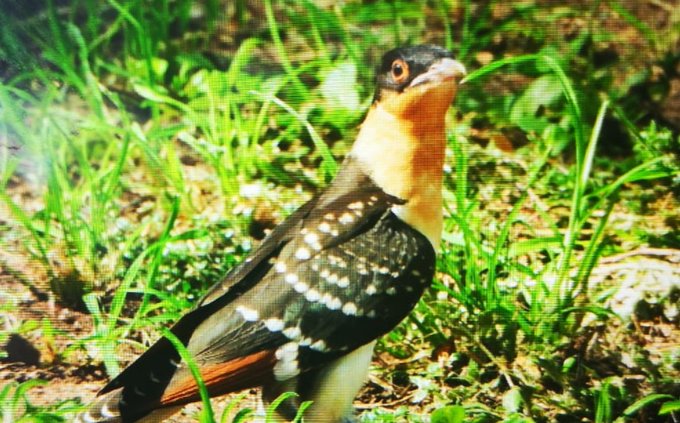African Emerald Cuckoo
Chrysococcyx cupreus

- Chrysococcyx cupreus.jpg (208.32 KiB) Viewed 295 times
20 cm; 38 g. Adult male brilliant iridescent green above, head and breast green, belly yellow; eye-ring blue, iris brown, bill green, slaty below, feet bluish. Female barred green and rufous above, face brownish and finely barred white, whitish below with greenish bars, breast washed buff, eye-ring bluish green, iris dark brown, bill black-tipped. Juvenile barred green and brown above, head barred green and white, below barred white and green (green bars as wide as white).
Like other cuckoos the African Emerald Cuckoo is a brood parasite, laying its eggs in nests of other birds. The intricacies of this behaviour have been unravelled over the ages and are suggested to have evolved as a way of boosting breeding success. It may have started with birds using old nests of other species or as a method of egg-dumping, where females lay their eggs in the nests of conspecifics or other species. Today it has evolved into a highly successful survival strategy.
How does this work? The female, firstly, removes an egg from the host’s nest, to compensate for the addition of her own (very clever

). The cuckoo egg is a close match although it is often larger; the egg has a relatively shorter incubation period, ensuring that it’ll hatch before or soon after the resident eggs. The cuckoo hatchling has the physical traits (concave back, strong legs and stubby wings) and the instincts to eliminate all competitors at its earliest convenience.
Females further optimises breeding success by laying 3 to 4 eggs in a ‘clutch’, depositing each in a different hosts nest. Since she does not need to care for the young she is able to lay up to 20 eggs per season, boosting productivity significantly.
Camaroptera brachyura (Green-backed camaroptera) is the most likely host in Southern Africa.

